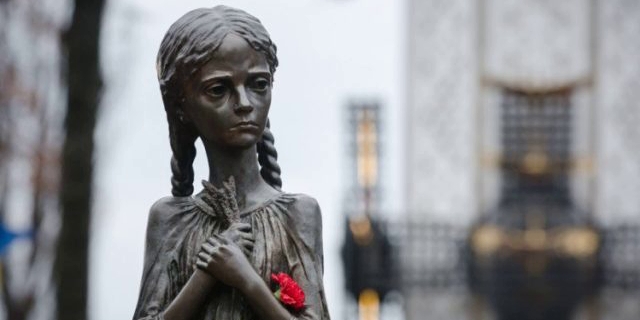The Harvest of Sorrow. In Memory of the Victims of the Holodomor in Ukraine
11/28/2020

In the last century, Ukrainians had survived three Holodomors: of 1921–1923, 1932–1933, and the famine of 1946–1947. But among the most tragic pages in the history of the Ukrainian people, the Holodomor of 1932–1933 is the saddest one. According to different sources, 4.5 to 10 million people died of starvation as a result of deliberate actions by the communist authorities in Ukraine over several years. By the scale, brutality and cynicism, the Holodomor has no analogues in the history of modern Europe. In peacetime and in favorable climatic conditions, millions of people died of starvation.
Not forgiving Ukraine for years of its struggle for freedom and desire to be free, the Soviet regime decided to turn the Ukrainian people into obedient slaves by starvation. After the total repression of the Ukrainian intelligentsia and clergy, the next victims of the Stalinist regime were Ukrainian peasants. The Holodomor was preceded by the forced collectivization of agriculture, “dekulakization” of the peasants, the grain procurement campaign, and the mass terror in villages.
On the fertile black soils of the world-renowned granary, just in the fields, on the roads, in cold houses, people and villages were dying, singly and by whole families. The famine took away those who for a piece of bread could not trade in the shrine, profiteer, steal, kill to survive. The Soviet regime was trying to turn the people of farmers and singers into the people of cannibals and thieves.
Instead of human feelings, the society was overwhelmed with fear – total, humiliating. Fear of being one's own self. Of speaking one's native language, remembering one's dead. Fear. The only and total legacy that the system of Stalinist terror left to the Ukrainian society and which, unfortunately, is passed down from generation to generation…
Archives can be classified for decades. Incriminating documents can be buried deeply. The traces of crime can be erased. History can be re-written more than once. But there is nothing you can do about the people's memory. After all the prohibitions, oppression, humiliation of human dignity, the memory comes to life and lives, no matter what. The people's memory is the most reliable historical source.
November 28, 2006, the Holodomor of 1932–1933 was recognized by the Law of Ukraine as genocide of the Ukrainian people.
It is our common duty to pay homage to the victims of the communist regime who were starved to death, as well as to tell about the reasons, consequences of the Holodomor and opposition to the criminal policy of the totalitarian regime.
Traditionally, on this day in Ukraine and around the world there is a mourning event “Lit the Candle of Remembrance”.
Let us bow our heads to the memory of the victims of the terrible artificial famine. And even with belated bells, we will call millions of human souls to write them in the history of memory. Because memory is an endless book in which everything is written: human lives and the life of the country.
